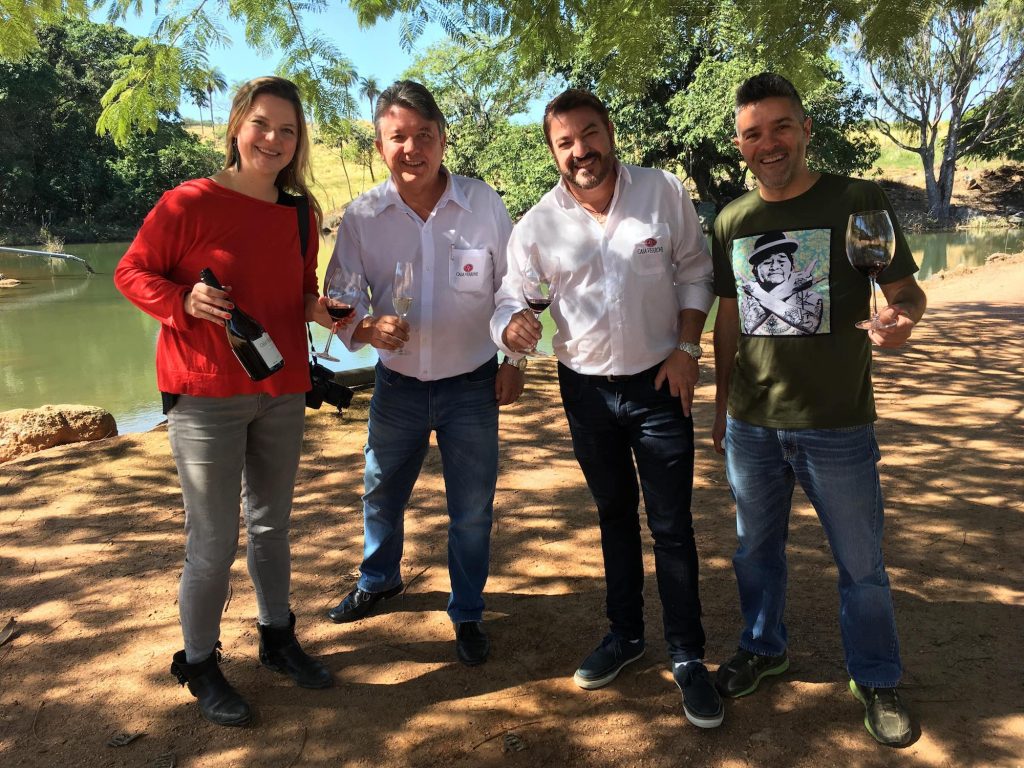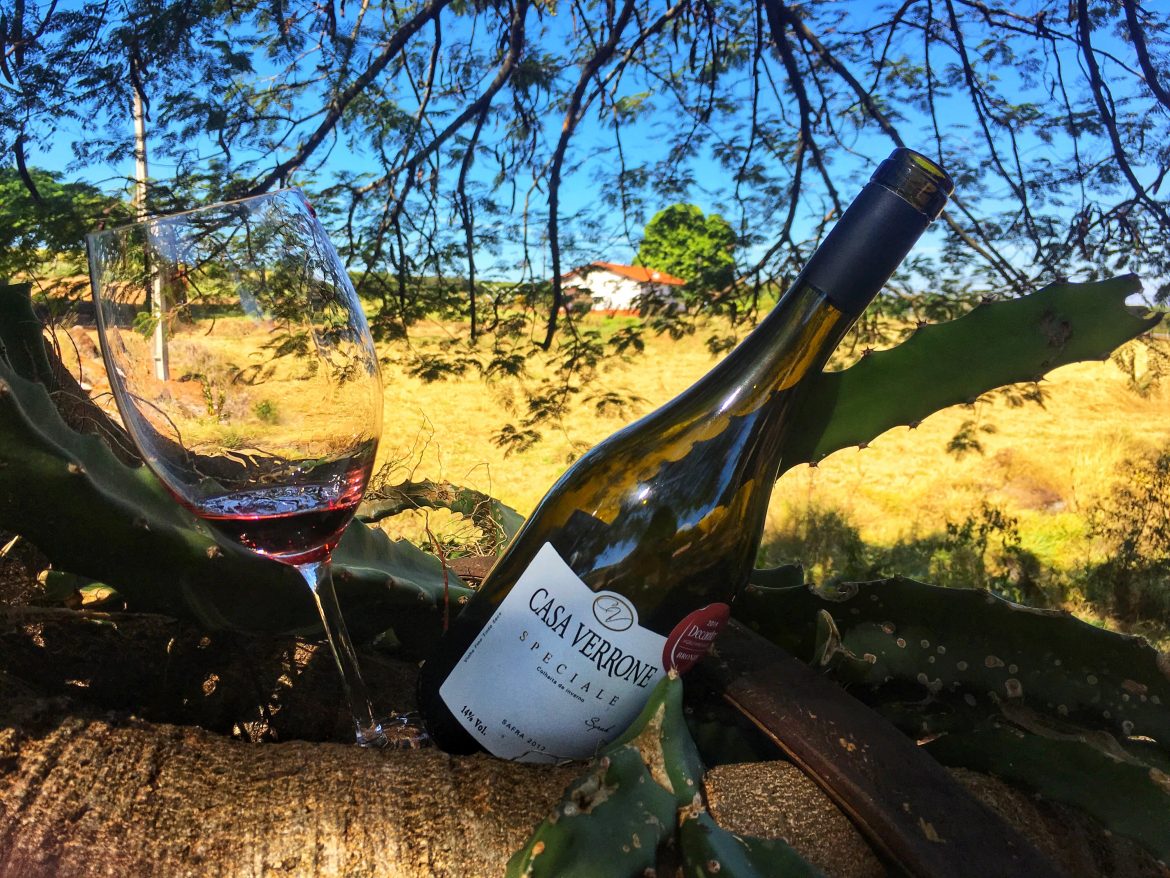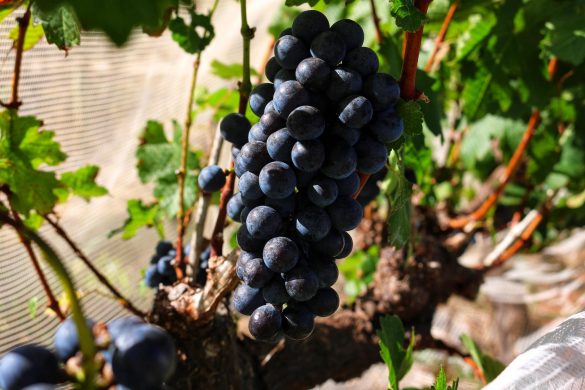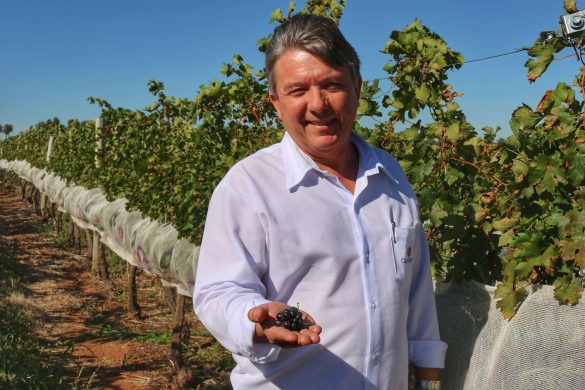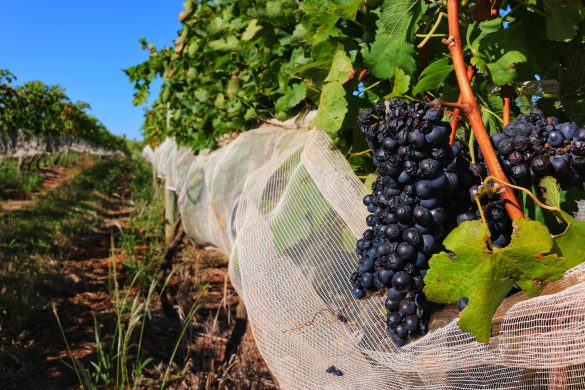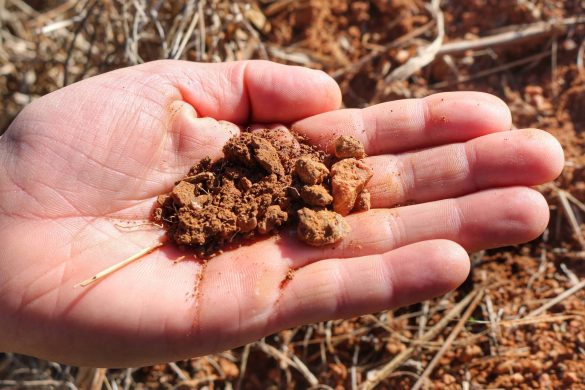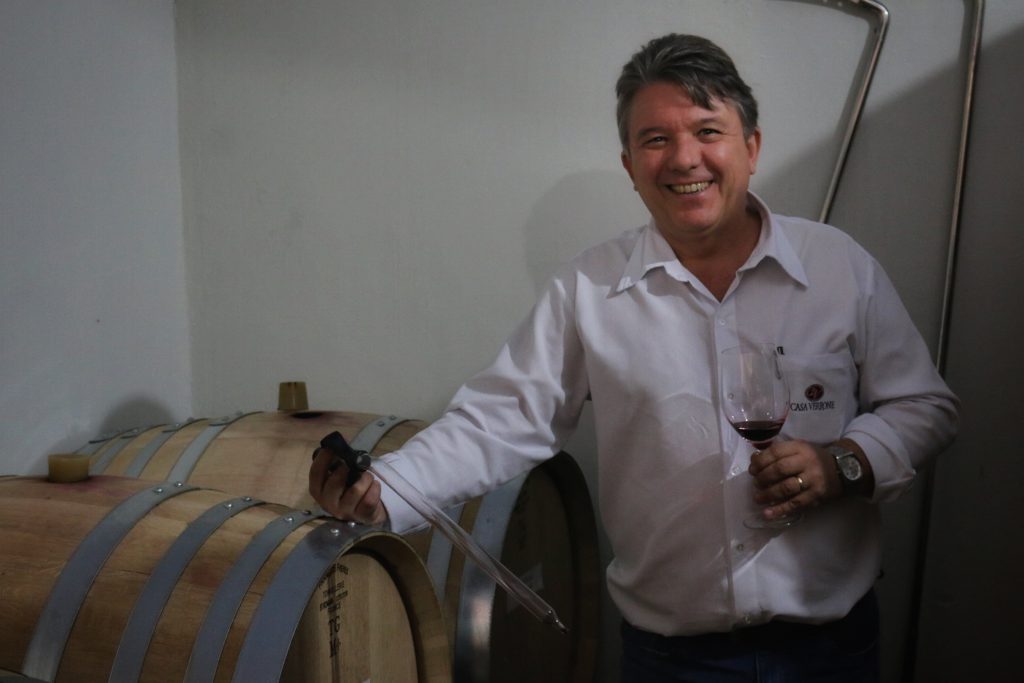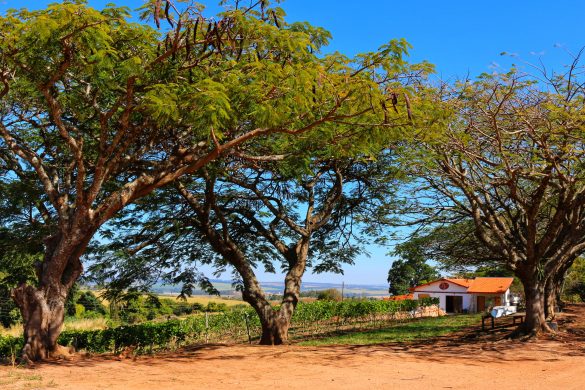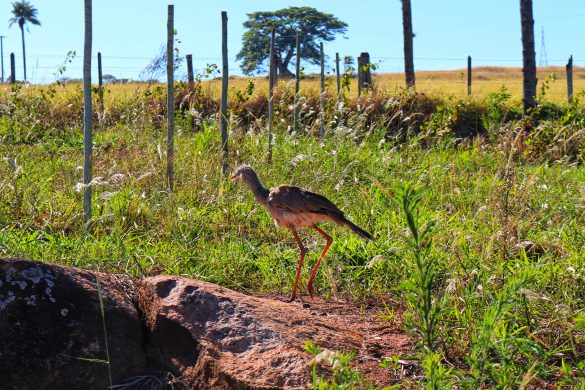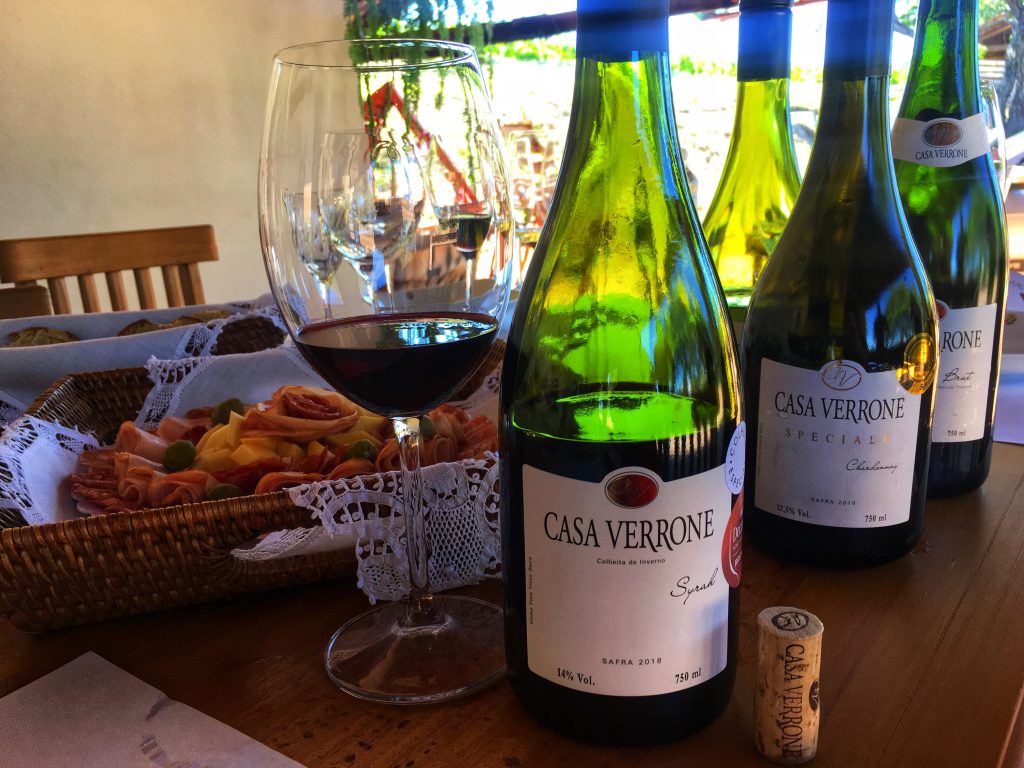There’s something interesting happening in Serra da Mantiqueira… this mountain range outside of São Paulo is a growing hub of winter harvest vineyards. Winemakers and growers are choosing to harvest their grapes in the Brazilian winter, in June and July, instead of the humid summer months. One of the key proponents of the winter harvest (colheita de inverno) is Marcio Verrone of Casa Verrone.
In this video tasting, Marcio Verrone and I taste through three of his wines – two of which are winter harvest wines, and one of which is a summer harvest wine. Learn why these harvests are being split in this tasting and interview:
(Portugues abaixo!)
Amanda Barnes: So I’m here in Casa Verrone, and we’re in the middle of the Brazilian winter. And it’s beautifully sunny and dry! The reason I mention winter is because these two wines are harvested at the moment in winter, but this first one here – your sparkling wine – is harvested in the summer. Why is it that you can harvest in the summer for sparkling wine?
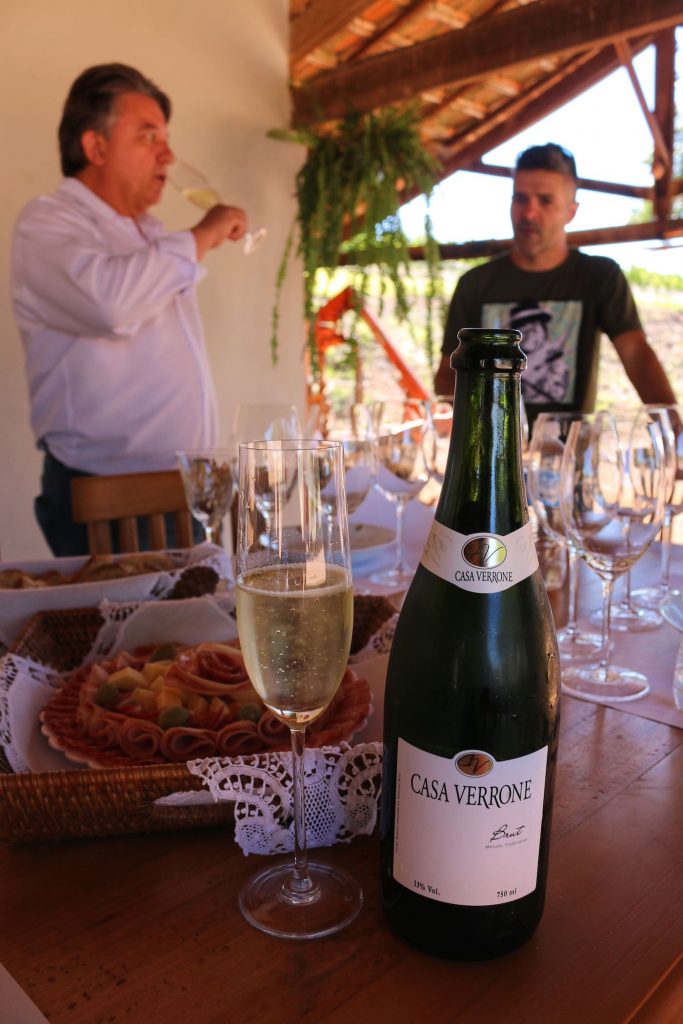
Amanda: Excellent, and what really gives this wine a lot of character is the five years on the lees. So a traditional method [sparkling wine] in the same way that you would make Champagne, all fermented in the bottle and these five years on lees which gives it this incredible complexity, yeasty brioche notes, but also this great minerality of the Chardonnay. And what I love about this is that you are harvesting in December, so it’s actually the harvest year before we think is the harvest!
Marcio: Yes, because in January the rains start here. And then it is impossible to produce a nice wine. These vines would continue to be in a big quantity of water, and rain. But we can produce quality with this early vintage/harvest.
Amanda: And it is a quality wine. I think this is fantastic value for money too, it is just 65 Reales here in Brazil, which is incredible for a bottle that’s spent 5 years on the lees.
And then let’s move onto these other two wines, which is perhaps what you are best known for at Casa Verrone – this winter harvest. And the reason you do this winter harvest is because you’ve got the rainy summers. So tell us about the climate in the winter, in June and July.
Marcio: The idea is to harvest when it is very dry, because [winter is] very dry. And we have a lot of sunshine. Then you have a big difference between the temperature in the night, and the temperature during the day.
The [thermal amplitude] produces a lot of aromas. And the sun is very hot which produces sugar. And we don’t get any diseases because we don’t have water problems, we get very pure grapes. And this way I can produce good quality wine with concentration.
Amanda: And the first wine we are tasting is your Syrah. And one of the things that is really interesting here are this terra rossa soils that you have, mixed with granite, which is excellent for Syrah. There are some very famous regions around the world, Australia in particular, which love these terra rossa soils for Syrah. What is it that you like about this style of fresher Syrah (with just 2 months in oak barrel)?
Marcio: We would like to produce a red wine to [introduce] this grape variety to consumers. It’s an every day wine, not too expensive, and so we can drink this every day and it can [introduce] many people into the world of wine. This is the idea. And to bring people into Brazilian wine.
Amanda: It brings you in! It allures you in, I think that’s great.
And then this one here is for the wine lovers… this is a much more serious wine and much more structured, can you tell us a little bit about the Cabernet Sauvignon – Cabernet Franc blend?
Marcio: This is a 50/50 percent blend. This was, in the beginning, the [grape varieties] I thought would make the best wine we have here, and after more than two years, this wine appeared. This wine goes into only new oak barrels, and we put 50% Cabernet Sauvignon and 50% Cabernet Franc in the blend.
These varieties match the quality of these conditions that we have with our soil and our weather at the moment [in winter harvest]. You can make an excellent wine. As you are tasting…
Amanda: I am tasting it, and I’m very much enjoying it! And what I like about this wine is that it feels like a very cool climate wine, it has nice acidity, it has got lovely dark, peppery notes, and dark fresher fruit as well. And it really does show that thermal amplitude that you were talking about, and the sunny and dry days and cooler nights. And all this great breeze that you get here in the [Serra da Mantiqueira].
Marcio: This is a wine for food! You can eat this with wild animals, for example. Because it has aromas of eucalyptus.
Amanda: Yes – it would be nice with some game! What is your favourite Brazilian dish for this wine, what’s your pairing?
Marcio: Carneiro! Lamb is very nice to eat with this.
Amanda: Perfect, well saude! Obrigada!
Find out more about Casa Verrone in our winery guide, and you can peruse their online wine shop at their website.
Casa Verrone degustação e entrevista em portugues
Amanda Barnes: Então estou aqui na Casa Verrone e estamos no meio do inverno brasileiro. E está lindamente ensolarado e seco! A razão de eu mencionar o inverno é porque esses dois são colhidos no inverno, mas este primeiro aqui – seu vinho espumante – é colhido no verão. Por que você pode colher no verão para espumante?
Mario Verrone: Este vinho é produzido em um vinhedo perto daqui, a 1300m de altitude. Então decidimos produzir isso no verão porque o frescor é intenso. Temos 75% de Chardonnay e 25% de Pinot Noir.
Amanda: Excelente, e o que realmente dá a esse vinho muito caráter são os cinco anos nas [em contato com] borras. Então, um método tradicional [vinho espumante] da mesma forma que você faria Champagne, tudo fermentado na garrafa e cinco anos em borras que lhe dá essa complexidade incrível, notas de brioche, levedura, mas também esta grande mineralidade do Chardonnay. E o que eu amo sobre isso é que você está colhendo em dezembro, então você está colhendo antes do que nós imaginaríamos fazer a colheita!
Marcio: Sim, porque em janeiro começa a chover. E então é impossível produzir um bom vinho. Essas videiras continuariam a estar com grande quantidade de água e chuva. Mas podemos produzir com qualidade, que é a nossa intenção.
Amanda: E isso é qualidade. Eu acho que esse é um valor fantástico também, são apenas 65 reais aqui no Brasil, o que é incrível para uma garrafa que passou 5 anos em contato com as borras.
E então esses outros dois vinhos. Que é talvez o que você é mais conhecido na Casa Verrone, que é a colheita de inverno. E a razão pela qual você faz isso é porque você tem os verões chuvosos. Então nos conte sobre o inverno, em junho e julho. Como está o tempo lá fora? Conte-nos sobre o clima durante junho e julho.
Marcio: A ideia é colher quando está muito seco, porque [o inverno é] muito seco. E nós temos muito sol. Então você tem uma grande diferença entre a temperatura durante a noite e a temperatura durante o dia. A [amplitude térmica] produz muitos aromas. E o sol é muito quente, o que produz açúcar. E nós não recebemos nenhuma doença porque não temos problemas com a água, e [a uva] é muito pura. E assim posso produzir uma boa qualidade de vinho e concentração, que as outras plantas não conseguem.
Amanda: E o primeiro vinho que estamos provando é o seu Syrah. E uma das coisas que é realmente interessante aqui é esse solo de terra roxa que você tem, com granito, que é excelente para o Syrah. Existem algumas regiões muito famosas em todo o mundo, e na Austrália em particular, que adoram esta terra roxa para o Syrah. O que é que você gosta sobre este estilo de Syrah mais fresco? Então este é um vinho que acabou de passar 3 meses em carvalho, como você descreveria este vinho?
Marcio: Gostaríamos de produzir um vinho tinto para o dia-a-dia.
Amanda: Como na hora do almoço, terça-feira à noite …
Marcio: Um vinho na hora do almoço, terça-feira, domingo, todos os dias vinho. É um vinho mais barato, não muito caro, e assim podemos beber isso todos os dias e pode [introduzir] muitas pessoas no mundo do vinho. Essa é a ideia. E trazer pessoas para o vinho brasileiro.
Amanda: Isso te fascina, eu acho ótimo. E então este aqui é para os amantes do vinho … este é um vinho muito mais sério e muito mais estruturado, você pode nos contar um pouco sobre a mistura de Cabernet Sauvignon – Cabernet Franc?
Marcio: Esta é uma mistura de 50/50%. Este foi no princípio as [castas] que pensei que fariam o melhor vinho que temos aqui, e depois de mais de dois anos, este vinho apareceu. Para este vinho é usado apenas em barris novos de carvalho, e nós colocamos 50% de Cabernet Sauvignon e 50% de Cabernet Franc na mistura. Isso combina muito com a qualidade dessas condições que temos do nosso solo e do clima no momento [na colheita de inverno] para um excelente vinho. Você está provando isso.
Amanda: Estou saboreando e estou gostando muito! E o que eu gosto sobre este vinho é que sente-se como um vinho de clima frio, tem boa acidez, tem lindas notas escuras e apimentadas, e frutas frescas e frias também. E isso realmente mostra que a amplitude térmica que você estava falando, e os dias ensolarados e secos e noites mais frias. E toda essa brisa que existe aqui na Serra da Mantiqueira.
Marcio: Isto é para comida! Você pode comer isso com animais selvagens, por exemplo. Porque tem aromas de eucalipto.
Amanda: Sim – seria legal com um animal de caça! Qual é o seu prato brasileiro favorito para este vinho, qual seria sua harmonização?
Marcio: Carneiro. Cordeiro!
Amanda: Cordeiro! Ooo – cordeiro assado, eu gostaria disso. Esta é uma boa harmonização.
Marcio: O cordeiro é muito bom para comer com isso.
Amanda: Perfeito, bem, saúde! Saúde! Obrigada!
Leia mais sobre a Casa Verrone no nosso guia winery
